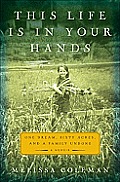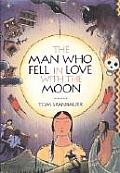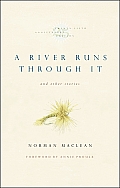
I've been looking forward to blogging for Powell's, not only as a chance to revisit a bookstore and city I love, but as a full-circle kind of thing. I didn't know it at the time, but it was when living in Portland in the early 2000s that I wrote the first bit of what would become my memoir,
This Life Is in Your Hands, debuting tomorrow.
It was the peak of start-up dot com hullabaloo, and I was working as a web designer at some failed companies (Utour.com) and successful ones (Wellmed.com, now part of WebMD), but I wanted to be a writer. I often thought of the story I've now written about growing up on a homestead in Maine in the 1970s without electricity and running water and the tragedy my family faced then, but I kept avoiding it. I was afraid I'd find out some of the things that happened were my fault. A novel seemed much safer. Fun, in fact. I sought out workshops and writers groups, and spent a good deal of time at Powell's, browsing the aisles and going to readings.
 That's when I saw the Dangerous Writers workshop flyer in the coffee shop next to Powell's. There was a certain mystique surrounding this exclusive group run by Tom Spanbauer, author of The Man Who Fell in Love with the Moon. "He's a Raymond Carver minimalist," someone said, "and he inspires his students to go for the heart." I heard Chuck Palahniuk cut his teeth with Tom before he wrote Fight Club, and Gordon Lish, Amy Hempel, and Ken Kesey were whispered to be Tom's friends. The weekly writer's group had a forever waiting list, but this weekend workshop was a rare chance in the door.
That's when I saw the Dangerous Writers workshop flyer in the coffee shop next to Powell's. There was a certain mystique surrounding this exclusive group run by Tom Spanbauer, author of The Man Who Fell in Love with the Moon. "He's a Raymond Carver minimalist," someone said, "and he inspires his students to go for the heart." I heard Chuck Palahniuk cut his teeth with Tom before he wrote Fight Club, and Gordon Lish, Amy Hempel, and Ken Kesey were whispered to be Tom's friends. The weekly writer's group had a forever waiting list, but this weekend workshop was a rare chance in the door.
The first night we gathered in Tom's basement while he sat beneath the glow of a lamp at the head of the table and put his peculiar spell on us. "This weekend we will bare our true selves," he said to the group, or something to that effect, and my cheeks immediately began to burn. "We're here as writers to describe things both as they appear on the surface and the truth that lies beneath," he explained. Perhaps sensing my growing anxiety, he looked down the table and said, "Take Melissa there in her white sweater. She looks so clean and neat, but what's going on inside?"
I stared mutely back at the eclectic gathering of short story writers and want-to-be memoirists. There was a sweet-faced young gay guy next to me, and a woman sitting near Tom might have actually been a man. Tom himself was celebrated as one of the first openly gay novelists. Some of these writers were penning their truths at the risk of public disapproval and hatred. How could my own fears about my relatively simple childhood compare to that? I didn't feel I had anything to share.
Then Tom gave us an assignment to write in the first person about an event we didn't fully remember. I went home and wrote as if a pipe had burst. A scene from my childhood emerged, involving a drama going on between my mother and father.
The next day Tom made us condense what we'd written into one page — like the father in A River Runs through It — "make it half as long, and half as long again."  Mine turned into something about how my parents had barely spoken to each other in the 20-some years, since my sister drowned and we'd abandoned the Maine homestead. My childhood had been locked away in that silence. When I read my essay aloud I began to cry, I couldn't stop. The group sat with me patiently. Then the sweet-faced guy leaned over and said, "Right there, there's your book." Tom took the page and read it aloud for me in a kindly gesture of praise.
Mine turned into something about how my parents had barely spoken to each other in the 20-some years, since my sister drowned and we'd abandoned the Maine homestead. My childhood had been locked away in that silence. When I read my essay aloud I began to cry, I couldn't stop. The group sat with me patiently. Then the sweet-faced guy leaned over and said, "Right there, there's your book." Tom took the page and read it aloud for me in a kindly gesture of praise.
It would not be until five years later, when I was struggling after the birth of my twin daughters, that my husband sat me down and said I needed to write this story about my lost sister. At times, it was as hard as I'd feared, but I'd found the beginning of the voice for it in that workshop and the voice carried me through. I may not have learned to write the beautiful minimalist sentences that Tom is known for, but I did learn to go for the heart, to write the hard stories. And that, as they say, has made all the difference.